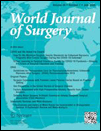Malignant Insulinoma: A Rare Form of Neuroendocrine Tumor
Abstract
Introduction
Due to the rarity of malignant insulinoma, a lack of the literature describing factors affecting outcomes exists. Our aim was to review malignant insulinoma incidence, characteristics and survival trends.
Methods
We identified all patients with malignant insulinoma in the SEER registries from 1973 to 2015. Incidence, neoplasm characteristics and factors affecting cancer-specific survival (CSS) were described.
Results
A total of 121 patients were identified. The crude annual overall incidence was low (range 0.0–0.27 cases per million person years). The largest proportion had localized disease (40%), while 16% had regional disease, 39% distant metastatic disease, and stage was unreported in 5%. Most neoplasms were in the body/tail of the pancreas, followed by the head of the pancreas. Grade was reported in 40% of patients; only a single patient reported as having grade IV with the remainder all grades I/II. Surgical resection was performed in 64% of patients. Within surgical patients, the median primary neoplasm size was 1.8 cm. Regional lymph nodes were examined in 57.1% of surgical patients, while 34% of examined nodes were positive. The median CSS was 183 months. On multivariable analysis, surgical resection, male sex and absence of metastatic disease were associated with superior survival.
Conclusion
While the greatest proportion of patients with malignant insulinoma present with localized disease, regional lymph node involvement was found in 34% of whose nodes were tested. Further studies are needed to assess the role of lymph node dissection in improving survival and preventing recurrence given the observed frequency of lymph node involvement.




